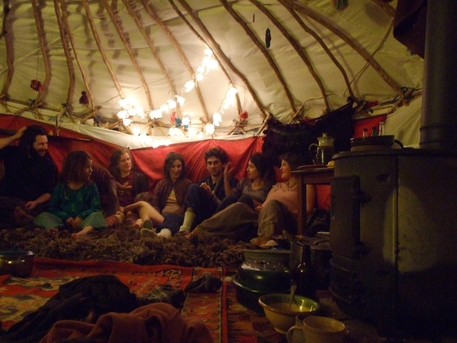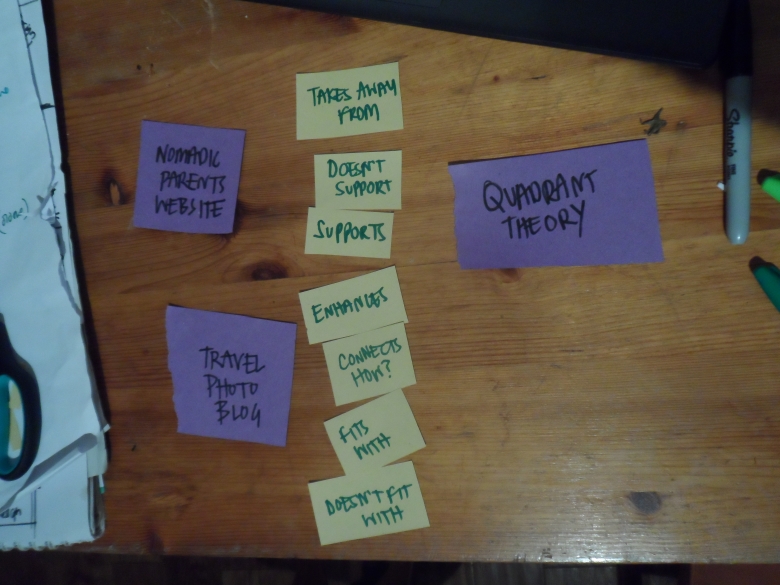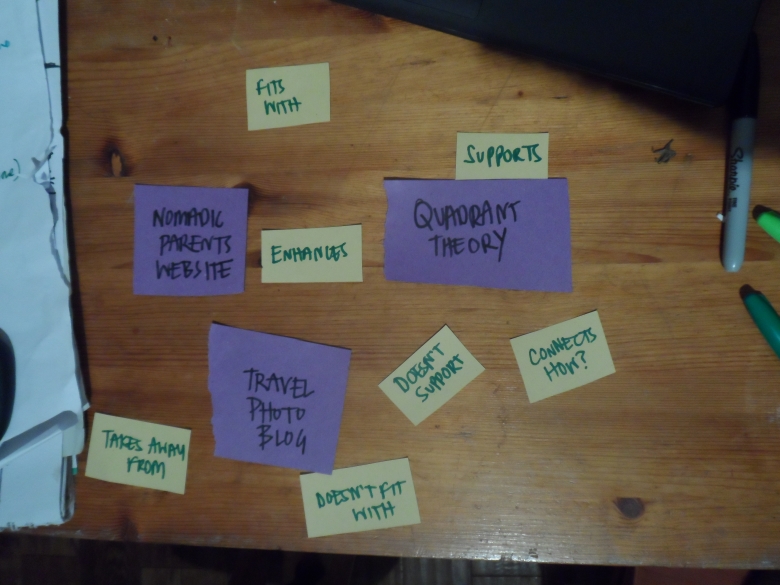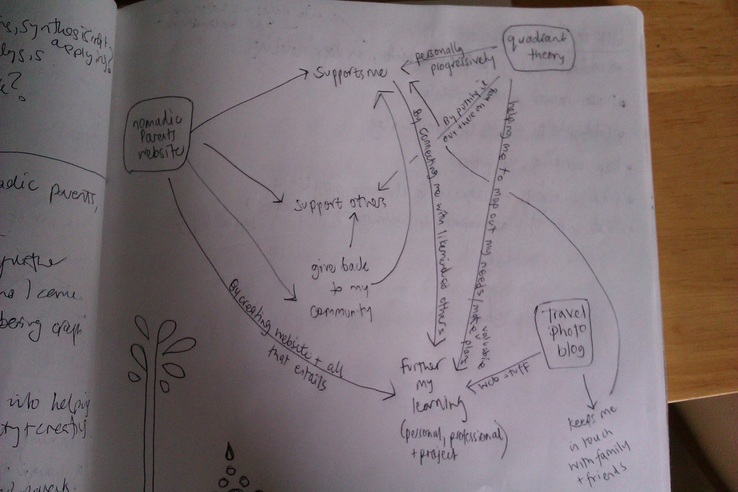Analysis
Wondering how to dive into the Analysis section of this project, I looked back at some advice from tutor Rich..
Rich says;
This fit's in with thoughts I've been having since my last project. I have been feeling the need to go back to the books and do some thorough reading and researching from the Ones Who Know More. From looking back I feel that I am still skimming the surface of the process that I am working through. Depth will bring so much more to my learning, both for me and for others who I am sharing it with. I think this is a vital aspect of this diploma that I haven't been exploring fully yet. You can see some of this in the resources section of this site.
Rich says;
- Read books, and show how I am researching, synthesising, and applying this knowledge.
- Look into analysis tools. Input/output analysis, SWOC analysis. What are these?
- Show clearly how research and surveying has influenced my design work.
This fit's in with thoughts I've been having since my last project. I have been feeling the need to go back to the books and do some thorough reading and researching from the Ones Who Know More. From looking back I feel that I am still skimming the surface of the process that I am working through. Depth will bring so much more to my learning, both for me and for others who I am sharing it with. I think this is a vital aspect of this diploma that I haven't been exploring fully yet. You can see some of this in the resources section of this site.
|
I think it has become clear that one thing that will positively impact our journey will be to put into place some networks of support. I noticed in my second project that having support from family and friends with Ohli was essential for any long term sustainability of my energy levels and ability to get anything done. This journey may be for a long time or a short time, but I think that will depend very much on how my energy levels are coping with the demands and challenges of our day to day. So, if I put some thought into this now, it shouldn't become a problem further down the line.
I think the best way to do this will be by remaining in regular contact with friends and family back home, and also of looking into places to go that will provide support and a good chance of like minded friendship. Although it wasn't what I had imagined, the option of staying with a friends family to ground ourselves once arriving into the country seems like a very good option. This gives us the chance to develop a base where we can then move out from, and a bit of time to find our feet over there. |
I've also been thinking about the best and most efficient way that I can connect with people back home and also with others that it would be good to connect with on the road. As there is little time or chance for phone calls and skype chats with the big time difference and limited internet, I think that I will create a photo blog documenting our personal journey for our close friends and family to keep in touch with where we are. And then to reach out to the wider community, I could create a seperate website, a space to share the knowledge and experience of travelling. After thinking the one through I can see that this could stack in a few different functions nicely;
- It would create a space for me to share my experiences that may be of interest to other travelling parents, hopefully giving inspiration and advice
- It would also be a space where other parents could get in touch with me, also offering inspiration and advice
- It could provide information on natural healthcare and homeoprophylaxis, as I have already been asked to share this with several others I have met along the way
- It would help to reinforce my knowledge on aspects like these as well as reaffirming my strength and belief in why we are making this journey
- It would hopefully positively impact the world around me, and fill in some gaps in my quadrant theory work, helping me to reach out, be a part of and a benefit to my community
Input output analysis
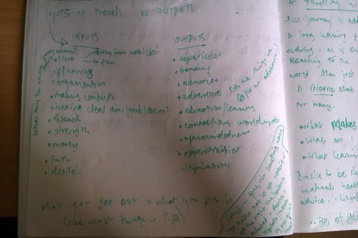
My learning journal
One of the tools that Bill Mollison suggests using is an input-output analysis of your design, to make sure that things remain in balance. As he says, a surplus of inputs creates pollution in the system, a surplus of outputs creates waste. So the idea is to have all elements of the system working together, each having many uses. I wrote out the possible inputs and outputs of planning a journey with a small child. I found that I could list a lot of both! And noticed that a lot of the inputs, things such as planning, making contacts, research, would all benefit from being shared amongst a community. This supports the idea of making a resource for others to benefit from.
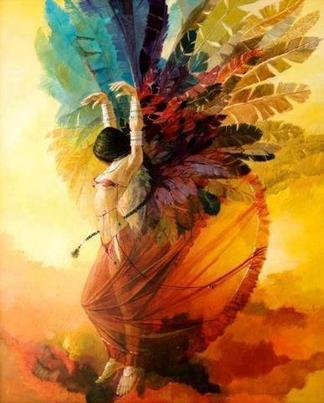
When setting out on this journey one of the main things that I feel drawn to is to not make a solid plan of where we will spend our time, and leave it open to change. I have observed from previous trips I have taken that I get little feeling of freedom when our trip is fully planned out, and often return home with that yearning feeling for adventure still in my belly. I've found that I thrive on spur of the moment decisions and need that feeling of freedom to change our plans or destination like the falling of a feather in the wind. I'd like to remain in balance by keeping a rough outline of where we would like to head, with ideas and inspirations, but no solid plan until we arrive at that point and know what feels right. You can never tell how something will feel until you are there in the moment, and I would like to develop and practice reconnecting with my instinctual feelings. I'd like to keep the vision I had at the beginning of this project very much in focus, (the project 'wish list', to see that again click here). I feel that if I keep coming back to that then I will find the places and people I need to keep us heading in the right direction.
On functional interconnectedness and random assembly
Bill Mollison says:
So I decided to look at how each element of the project so far connected. I adapted a technique often used in land design called random assembly, by writing each of the elements onto cards, along with connecting words such as 'supports', 'doesn't support', 'enhances', and 'connects how?' and moving them around, to see what connections I could see appearing. Having a play with this for a while helped me to see the links between the elements more clearly. I then wrote out what I had considered in a map, which you can see below.
- It is the arrangement of parts that make the system work or not.. how they function to assist each other
- Every component should function in many ways. And be supported by many components.
So I decided to look at how each element of the project so far connected. I adapted a technique often used in land design called random assembly, by writing each of the elements onto cards, along with connecting words such as 'supports', 'doesn't support', 'enhances', and 'connects how?' and moving them around, to see what connections I could see appearing. Having a play with this for a while helped me to see the links between the elements more clearly. I then wrote out what I had considered in a map, which you can see below.
By drawing this out like this I found that three of the aspects of this project so far (the nomadic parents website, a travel photo blog for friends and family, and the exploration on quadrant theory that I'm going through) all interact with each other and are linked in several ways. And I can see that the growth is over a wide range of areas, as some of the learning will be web design/professional based and some is more personally progressive. This made me feel really happy that I should carry on with these ideas. Great! Onwards and upwards..
you can continue to the next page, the design, here
